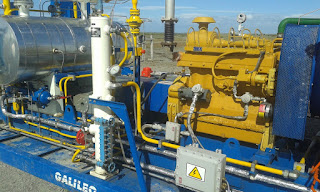THE FUTURE OF LNG
Deloitte Consulting's report on LNG titled "LNG at the Crossroads" gives an accurate overview of the
ever-evolving LNG business. LNG has gone through a classic case of boom-bust.
We experienced an impressive growth and now we are going through a phase a major restructuring.
LNG global trade has quadrupled in the last 20 years and is expected to further double in the next two decades mostly from the US and Australia, according Deloitte Consulting LLP. The report outlines the seven key factors that will shape the LNG industry in the years to come:
- Global economic growth: LNG consumption is driven by global growth in Europe and Southeast Asia. A slip in regional growth, particularly China, would flatten natural gas demand in key importing countries.
- Energy efficiency: Energy intensity of global growth has declined over the last few decades as high energy prices and environmental concerns have driven the adoption of higher efficiency technologies.
- Excesses capacity: New capacity coming online in the U.S. and Australia is weighing down on an already saturated market. As few as one in twenty planned projects may be need to meet demand through 2035, and only those with lower costs, direct access to markets and signed buyers will move forward.
- Shipping costs: Shortening the trading distance with more flexible contracts and widening of the Panama Canal can reduce the cost of shipping, driving an increase in volumes as incremental margins improve. This will reduce the natural gas price differential required to drive investment.
- New markets: Japan and South Korea import half of all LNG volumes, historically paying a premium over shipments in the Atlantic basin. Growth in trade will require new LNG regasification facilities to be built in more countries to meet growing global fuel needs.
- New end users: LNG is traditionally consumed for utility-scale power generation, but LNG as an alternative transport fuel for shipping, trains or trucks as well as a power source for remote small-scale grids will provide a long tail of potential demand growth.
- Market Liquidity: Floating liquefaction and regasification combined with new countries building both import and export capacity can transform the current contract-dependent market into one that provides trading opportunity through transparent gas benchmarks and a flexible spot market.
With these changes, it is imperative to understand the industry’s strengths, weakness, opportunities and threats. LNG ventures are prone to cost overruns and delays, according to the report. The best example is Chevron Corp.’s Gorgon LNG in Australia which has exceeded its budget and timetable.
New technology improvements make it possible to unlock value from increasingly smaller fields and markets, according to Deloitte. Growing demand is expected from small-scale regas in isolated markets or as transport fuel for heavy-duty trucks, trains and shipping
LNG makes it possible to monetize stranded gas reserves and provides more predictable cash flows and diversification compared to the traditional exploration and production business. The Galileo Cryobox offers an advanced technology permitting a easy entry in the LNG market with lower capital investment than the conventional production plants and the flexibility of a modular production. Furthermore Cryobox can start and stop withing 30 minutes offering great demand response.
Galileo Cryobox - Capacity 12 Ton/Day











































